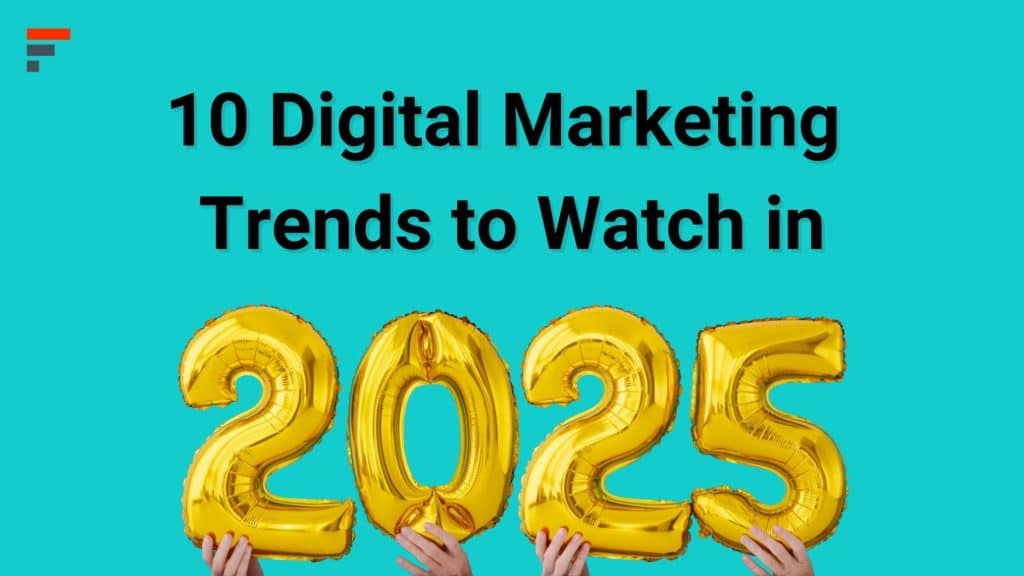As we roll into 2025, the digital marketing scene is gearing up for some exciting changes that businesses need to keep an eye on. With trends like artificial intelligence (AI), mobile-first strategies, and voice search leading the charge, the way consumers connect with brands online is evolving fast. It’s important to understand these shifts if you want to craft effective digital strategies and stay ahead of the curve in SEO. So, let’s jump in and explore the ten key SEO and digital marketing trends that are set to shape the industry in the coming year.
1. AI & Machine Learning in SEO
Unsurprisingly, topping this list is Artificial Intelligence and Machine Learning.
In 2023, ChatGPT set the record for the fastest-growing user base for any consumer application in history, reaching 100 million monthly active users just two months after launch. This led to widespread adoption from a variety of uses, ranging anywhere from recipe curation to passing an Ivy League MBA exam.
So why are we talking about this for SEO?
This new technology is rapidly changing the future of SEO (and digital marketing).
It’s changing marketers’ workflows at a rapid pace. It’s cured “blank page syndrome” to aid in the content creation process. It’s changed how SEOs do keyword research. It’s aided in content research.
But it isn’t just changing how we do things. It’s changing why we do things.
Search engines like Google and Bing have been among the early adopters of artificial intelligence, introducing GPT-like modules within search results with the introduction of Gemini (Google) and Copilot (Bing).
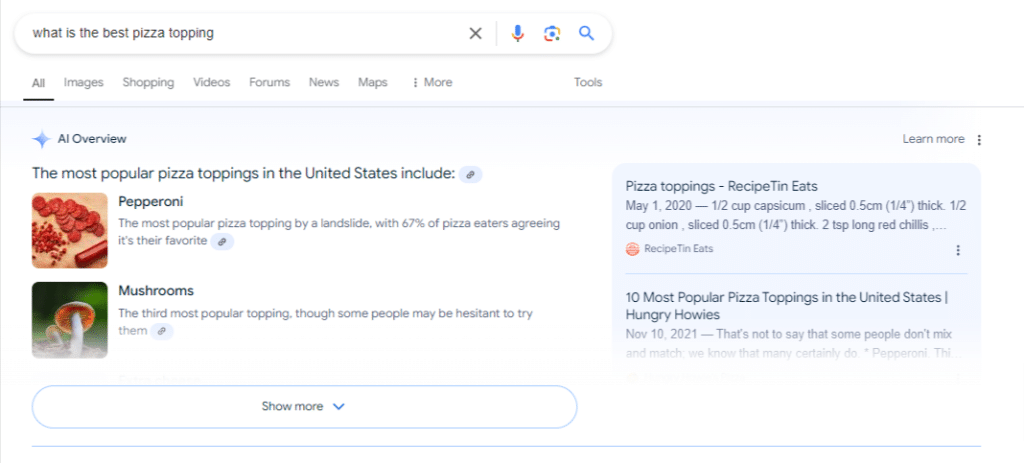
This is changing the way users interpret search results by including an AI-generated “summary” from various sources across the web, eliminating the need to manually curate the more “traditional” results below.
And it’s changing the way users search. While search engines integrate AI-generated content into the search results, some platforms are bypassing search engines entirely. Tools like Perplexity and SearchGPT are search engine “replacements,” allowing users to use a more conversational AI-based system to get the information they need.
Tools to be on the lookout for:
- Gemini (from Google)
- Microsoft Copilot (from Bing)
- ChatGPT (from OpenAI)
- SearchGPT (from OpenAI)
- Perplexity
Having a deep understanding of the tools above can give you a leg up on your competitors – and keep up with the rapidly changing world of artificial intelligence and machine learning.
- What to Do: Stay tuned! SGE Optimization, Holistic Digital Marketing Strategy
2. Voice Search Optimization
As user behavior changes, it’s important to adapt – enter Voice Search.
Voice Search started to pick up steam as an SEO concept with the introduction of smart devices in our homes and our phones.
“Alexa, what’s the weather going to be today?”
And this is true! A PwC study found that 65% of consumers aged 25-49 consider themselves “Heavy” users of voice assistants and 94% considered themselves either “Medium” or “Heavy” users. This was true for other ages as well: 92% of consumers ages 18-24 considered themselves “Medium” or “Heavy” users, and 97% of consumers ages 50+ considered themselves “Medium” or “Heavy” users.
With the rise of various AI-powered tools (paying attention yet?), don’t expect these digital marketing trends to change.
The way users search is far more conversational – even without the use of dedicated voice assistants.
- Amazon: “Alexa, what’s the weather going to be today?”
- ChatGPT Equivalent: “What’s the weather going to be today”
- Google: “today’s weather”
All of these will net the same result – information regarding today’s weather. But natural language – not “Google speak” – is becoming the learned behavior for GPT usage.
It’s important to consider voice search (either for voice assistants, or AI-powered LLMs) as a strategy in your content marketing. It’s no longer about keywords – it’s about meeting the requirements of the audience and their query. Aim for a short, succinct answer to quickly meet their requirements, with more “in-depth” information for users who may seek to learn more.
- What to Do: Voice Search Optimization
3. Content Marketing's Evolving Role
Content is King.
How many times have you heard that in recent years?
It’s becoming an often-used phrase in SEO. And for good reason. Content is king. Without good content, users don’t have much reason to be using your website.
But it’s important to understand what content actually means in 2025. It’s not just about words on a page. It’s about other forms of content: video, infographics, tools and resources, images, just to name a few. With so many different tools and mediums available, users expect to be served content in a variety of ways – and it’s important to create a content strategy to match.
These mediums offer a much more “immersive” and well-rounded experience. What does the product look like? How is it used? How does it compare to other products available to me? These can all be answered by text-based content – but it’s not the only or even the best way.
If you’re not integrating other forms of content into your content strategy in 2025 – prepare to be left behind.
- What to do: Content-first SEO strategy; Asset & Messaging Research
4. Local SEO & Reviews
Local SEO will play a prominent role in 2025 (and beyond) – and if it’s not already a part of your SEO strategy, it should be.
There are several prominent things to know pertaining to Local SEO – including the impact the Local Map Pack is having on website visibility. This module, which typically highlights three results per pack as well as a map highlighting the physical locations that match a user’s query, is becoming an increasingly frequent part of the SERP. According to FourFront data, 7% of tracked keywords contain a Local Map Pack.
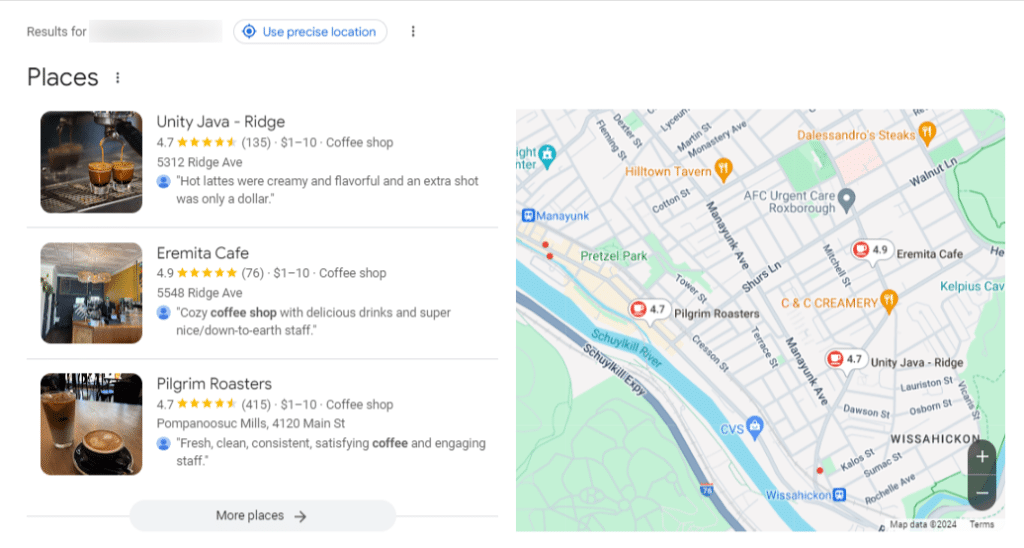
There are various factors that impact a site’s ability to rank in the map pack: the physical distance from the user’s location, the number of reviews, the quality of the reviews/ratings, the business description, among many others. These (with the exception of the user’s location) can all be found in the Google Business (formerly known as Google My Business) profile.
This profile can be a crucial part of a website’s performance. If your site is local-focused (that is you’re serving a specific area or region), this can be a substantial piece of your total organic performance.
It’s important to make sure you’re covering the basics of Local SEO: localized content (where applicable), optimizing your Google Business profile, and understanding your third-party local citations to ensure your website’s local SEO signals are primed for local search.
- What to Do: Local SEO Services, Local SEO Audits, Google Business Profile Optimization, Reputation Monitoring
5. Technical SEO
Technical SEO is an oft-forgotten aspect of SEO, but as Google shifts to find more “user-friendly” websites, Technical SEO is going to play a significant role in what websites “win out” in 2025 and beyond.
You’ve seen this before with several recent initiatives, including Core Web Vitals. Core Web Vitals, a part of the Web Vitals Initiative, are objective measurements of “quality signals that are essential to delivering a great user experience on the web.”
In other words – Google is using Technical SEO signals to quantify user experience and Core Web Vitals are just the start. Google may only be using Largest Contentful Paint, Interaction to Next Paint, and Cumulative Layout Shift as its current metrics, we can expect more measured technical SEO signals to be used in the near future as Google finds improved methods and metrics to objectively measure user experience.
Other Technical SEO signals, like structured data, are also used to improve user experience as its used to enhance search results (otherwise known as “Rich Results”) within the SERP.
- What to do: Regular Technical SEO Audits, Pagespeed Analyses, Structured Data (Schema.org) Strategies
6. Mobile-First SEO
Quick: how many times have you searched for something on your phone today?
Spoiler alert: it’s probably a lot. And you’re not alone.
According to Statista, mobile users are expected to hit 7.49 BILLION (yes, that’s BILLION with a “B”) users in 2025. And if you’re looking at your Google Analytics 4 data, then you’re probably seeing your own fair share of mobile users on your website.
And it’s not just you who’s paying attention. Google is listening – and responding – to this trend. We’ve seen Google shift to mobile-first indexing in recent years, which means it’s paying attention (and indexing) the mobile version of your website.
Google has provided a bit of a “roadmap” to prepare for “Mobile First SEO,” including:
- Creating a mobile-friendly website. Is your website built and designed with mobile users in mind?
- Checking your crawl and indexing rules. Can Google properly access, crawl, and render the mobile version of your website?
- Optimizing your supporting assets. Are images, files, etc. all properly optimized in a way that allows mobile users to properly load and render quickly (while maintaining quality)?
- Mobile vs. Desktop experience. Do mobile users see a different version of your website than other users?
It’s important that you’re checking all of these boxes to not only provide your users with a strong website experience – but to also ensure the success of your overall SEO strategy.
- What to Do: Mobile Performance Analysis, Mobile-first SEO Design
7. Zero-Click and Featured Snippets
“Zero click” might sound like something you don’t want in your SEO strategy – but trust us, you do.
A zero-click search is when a user obtains the information they need from a search result without ever needing to click on a result. Think modules like the Featured Snippet, Knowledge Panel, and more recently, Google’s Gemini (AI-based) results. These modules often pull direct answers to a user’s search, either from one or many websites.
These zero-click searches provide quick, relevant answers to users – and it’s definitely impacting your SEO strategy. According to FourFront data, more than 16% of keywords feature a Featured Snippet. And this number does not include the new Search Generative Experience (or SGE) module, which Google has been slowly introducing in Q3 2024.
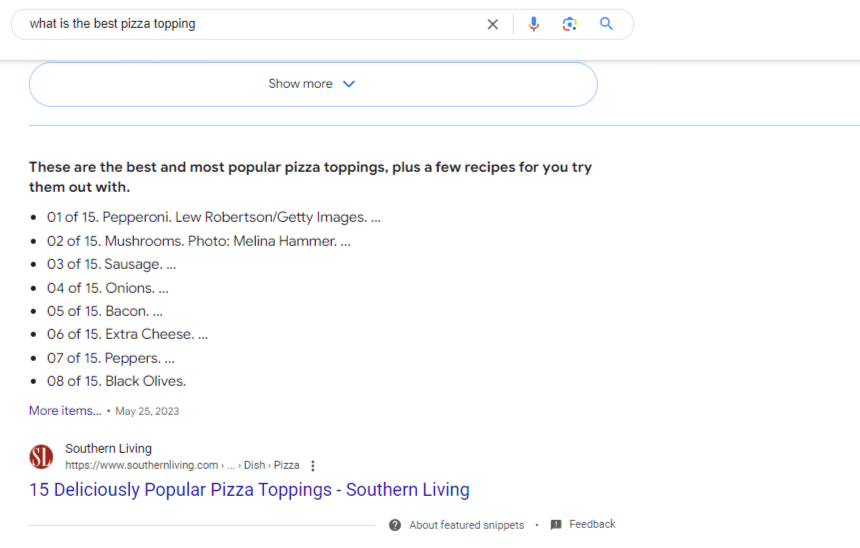
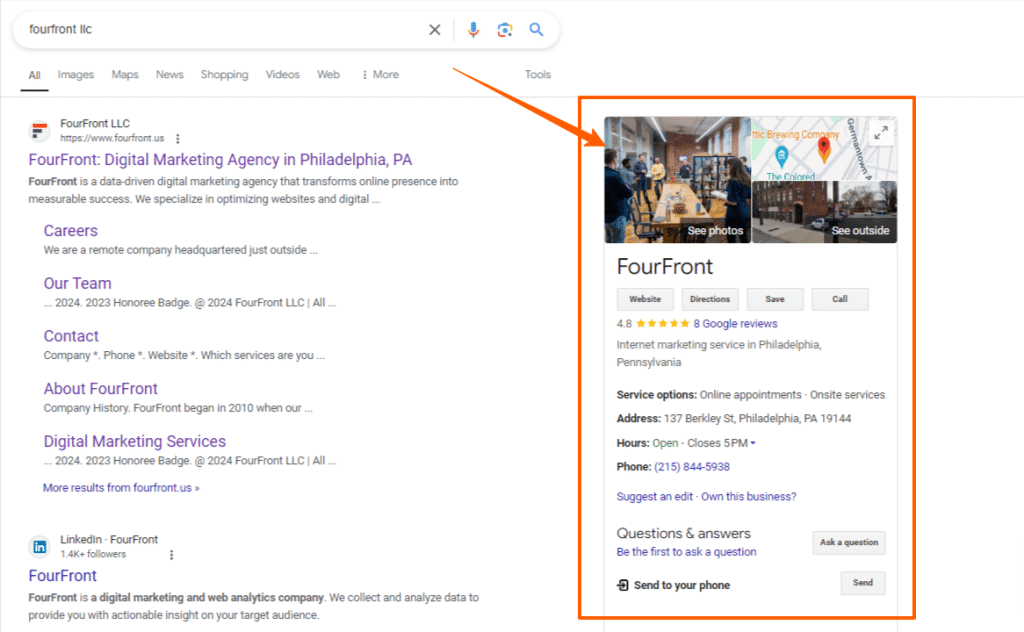
So how can we take advantage of something that provides zero clicks? A few ways:
- Prominent visibility. Ranking in the Featured Snippet may not give you a click, but it gives you prime SERP real estate that stands out ahead of all other results on the page.
- Brand authority. Zero-click snippets often highlight one particular source of information – and getting this placement gives your brand an opportunity to be the definitive source of information for a user’s query.
Remember: the idea behind zero-click searches is to get a quick, relevant answer to a user’s query. So to capitalize on zero-click searches, remember to keep your content clear and succinct, and structured in a way that is simple, logical, and easy to (quickly) understand.
- What to Do: Featured Snippet Analysis + Strategy, SERP Segment Analysis + Strategy
8. Visual & Video Search Optimization
We mentioned before that other forms of content are going to be important in 2025 – and visuals and videos play a significant role in that.
Users are turning to visual assets to answer their questions. And technologies are adapting. Google has introduced Google Lens, allowing users to search the web based on the photos they’re taking.
So rather than try to describe “what is the name of the plant that has a long stem with little green round leaves that smells nice,” you can simply take a picture in Google Lens, and Google will search the web for matching results to give you a quick answer (hint: it was eucalptyus).
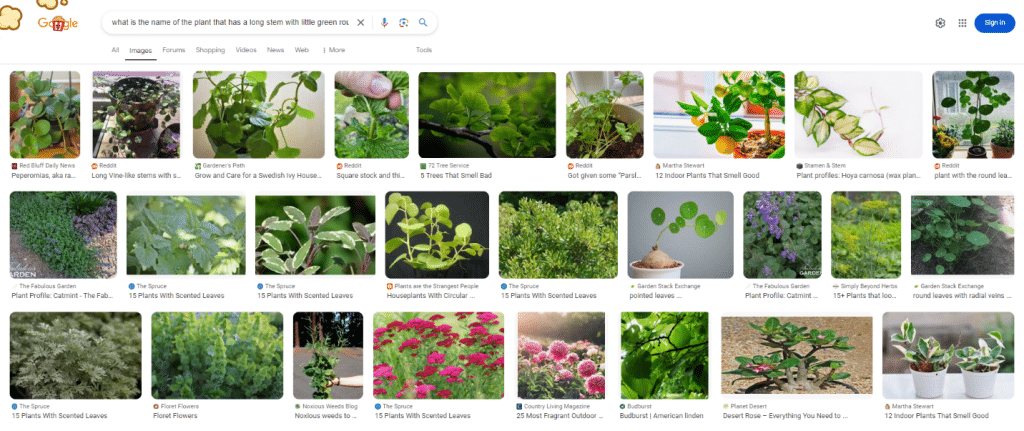
It’s important that you cover the basics of visual optimization in 2025. Optimize your titles and file names, your descriptions and your tags to ensure users (and Google) can easily understand (and find) your visuals.
- What to Do: Image Optimization, Video Optimization
9. Social Media Signals and SEO
Social media will play a role in your SEO strategy in 2025, whether you actively post or not. In fact: it’s going to be a big part of what sets apart good SEO from great SEO.
We predict social media will play a significant role in 2025 (and beyond) in two ways:
- Brand authority. The stronger your brand is on social media, the more “authoritative” your brand will be on other platforms – including SEO. Think of social media as the new backlinks.
- Pseudo-SEO. More and more, consumers are going to social media as a search engine. Social media platforms like TikTok and Instagram’s Reels are a common form of “social proof” that allows users to hear directly from influencers (paid or organic) about a brand’s products, services, etc. that has a direct impact on their decision making. More and more, users will turn to these platforms to get the information and answers they seek without needing to turn to Google and other “traditional” search channels.
Both ways require a complete, thoughtful social media strategy. Which platforms are right for your brand? How can you better reach your audience on social media? These will be imperative questions to answer to jumpstart your social media (and SEO) strategy.
- What to Do: Social Media Strategy
10. Trustworthiness & E-E-A-T
Expertise, Authoritativeness, and Trustworthiness (E-E-A-T) is a concept used by Google to evaluate the quality of content on websites, playing a significant role in SEO. E-E-A-T focuses on how well content reflects the creator’s knowledge (Expertise), the website’s reputation in the field (Authoritativeness), and how reliable or accurate the information is (Trustworthiness).
With Google’s increasing emphasis on user experience and relevant content, E-E-A-T is crucial for businesses looking to improve their search rankings, especially in industries like healthcare, finance, and education, where accurate and credible information is paramount. All of these industries fall into “YMYL” categories (Your Money, Your Life) that impacts a users’ personal or financial well-being – putting them under even more scrutiny than other industries.
So how can we improve our E-E-A-T? This means highlighting customer testimonials and reviews to build trust, providing credentials and certifications (where applicable), and case studies to highlight real-world experience. Think to yourself: how can I prove to my users that we are a trustworthy leader in our industry? This will help be your “guiding light” to improving E-E-A-T. Additionally, it’s important to note that we do this on our pages themselves. We’re not JUST talking about having case studies on the website; we’re talking about referencing them on the actual Service pages themselves.
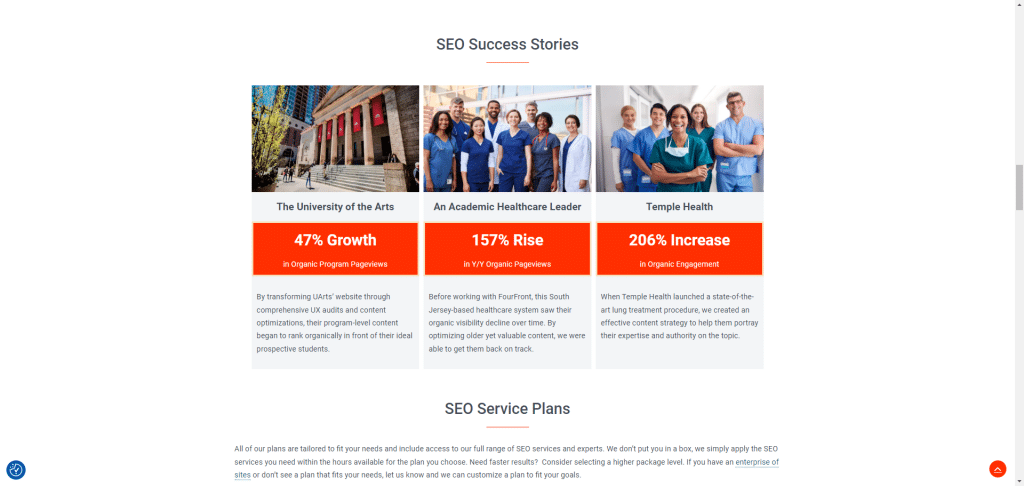
- What to Do: E-E-A-T Audit (by Site and/or by Page)
Managing Client Expectations in the Face of AI
We (as SEOs) aren’t the only ones questioning the role of AI – it’s our clients, too.
AI will become a part of your daily work flow (if it hasn’t already, and I’d recommend that it does). And as such, you’ll have an opportunity to become a thought-leader, a road-paver, and an early adopter of a new (and evolving) technology.
This gives you the perfect opportunity to answer common questions that you’ll inevitably get from your clients:
“How does AI change my business?”
“How will AI impact my marketing strategy?”
“How is AI impacting our SEO strategy?”
All of these questions are a perfect opportunity to help educate your clients and explain the impact AI is having on their (and your) world. Potential talking points include:
What new tools are you using?
How are you adopting AI into your daily workflow?
How is AI impacting the performance metrics for your client?
It’s important to not only educate – but to set realistic expectations on the role AI is playing, and the role AI will be playing as you work together with your clients.
- What to Do: Read, read, read!
FAQs
- How will AI and machine learning change SEO in 2025?
- Drastically! Google and Bing are both introducing changes to the search results including artificial intelligence, prominently placing results above “traditional” results. And user behavior is changing too, as users adopt new technologies and platforms above more traditional search engines.
- Why is voice search optimization critical for local businesses?
- Voice search is quickly becoming a prominent part of search results. Voice assistants are a common way for users to “search” online, answering user questions with simple conversations. And with the rise in popularity of artificial intelligence, search is becoming “less keywords, more conversation” with voice search.
- How can I improve my website’s Core Web Vitals for better rankings?
- Core Web Vitals are a prominent part of your technical SEO and user experience. At FourFront, we offer a Core Web Vitals Audit that analyzes your website’s Core Web Vitals performance at scale, and helps identify any HTML elements (by page) contributing to failing scores.
As we gear up for 2025, it’s clear that key digital marketing trends like AI, mobile-first strategies, and voice search are shaking up how consumers engage with brands online. These shifts aren’t just passing fads; they’re crucial for developing effective digital marketing strategies. In a world where consumer behavior is changing faster than ever, embracing these trends is essential for staying ahead.
So, how can businesses thrive amid these changes? It’s all about proactively adding these insights into your marketing efforts. If you’re feeling a bit overwhelmed by it all, don’t sweat it! We’re here to help you navigate this evolving landscape.
Ready for personalized guidance on optimizing your digital marketing strategy? Let’s chat! Schedule a free consultation with us today and get started on your path to success.

